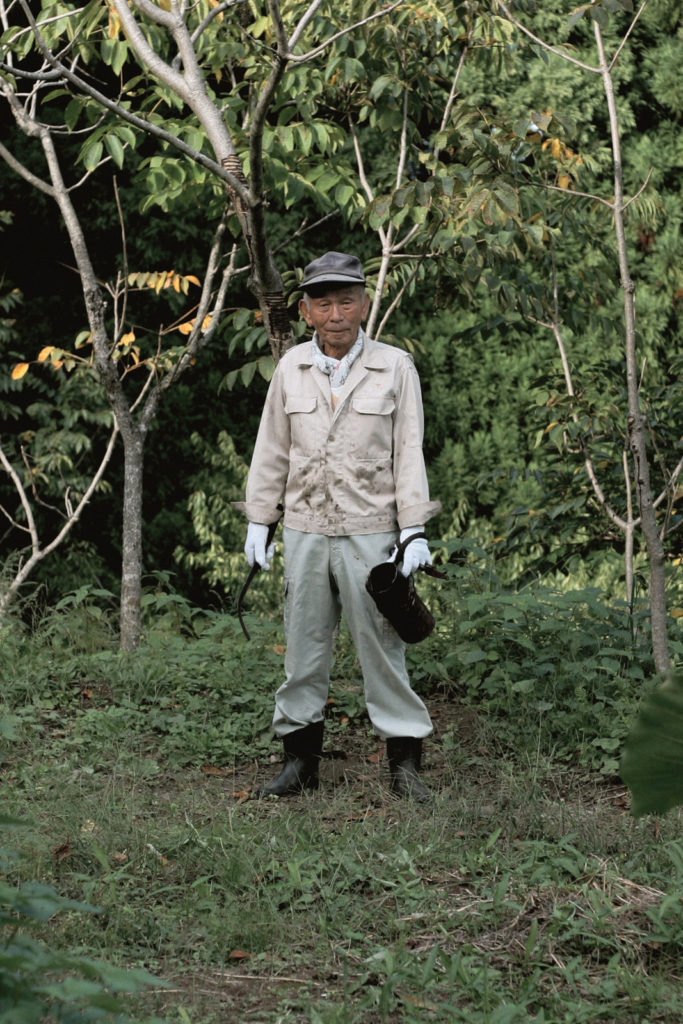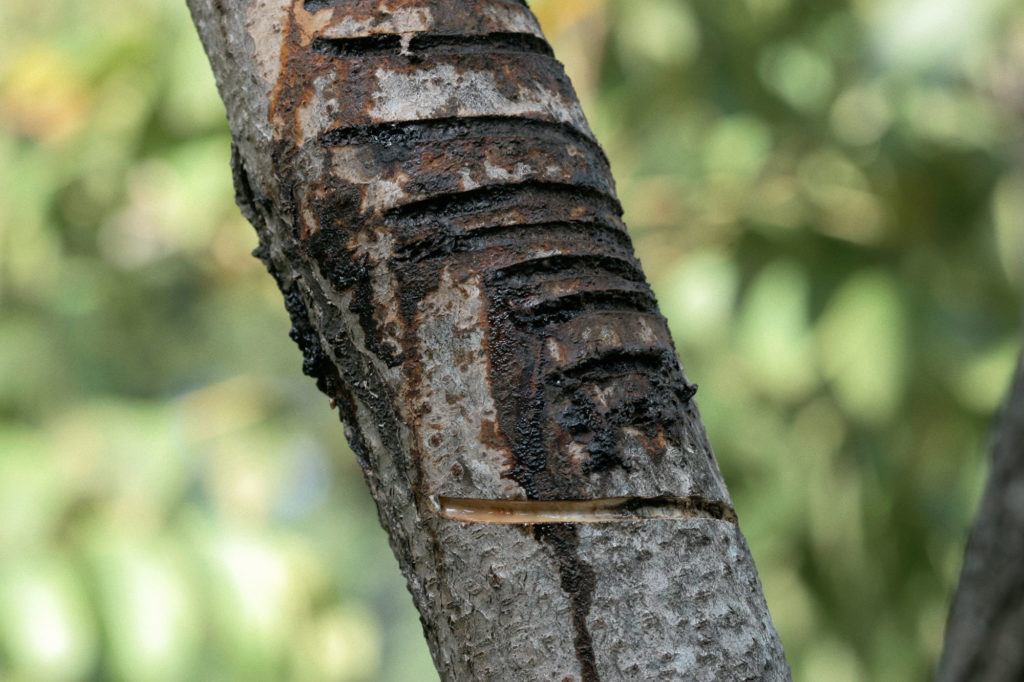Story 01 | Reflections from a tree
The sap from a Japanese Urushii tree is toxic, difficult to extract and nearly as valuable as gold. This precious syrup, gathered from a dwindling supply of trees scattered around Japan’s countryside, is the essential material required to produce Wajima Lacquerware and is gathered very carefully (touching it can lead to an allergic reaction which lasts for years) by a small group of Wajima craftsmen. Walking through his Wajima farm, Kazuo Wakaoka, one such craftsman, remembers the first time he went gathering Urushii sap. “It was with my father when I was 16, just after World War II. In those days you would leave for five months, searching for Urushii trees across Japan. We would work about 70-80 trees per day, working a total of about 400 trees.” To find good patches of Urushii trees his father would ride a bicycle around an area, spotting them with binoculars – looking for a tree about 15-20 years old, with healthy bark. He would then buy that single tree from the landowner, “and drain the sap from it once every five days. We could get about 155cc from a single tree before it would die.”

But after the war ended a new era of economic growth began. The lacquer industry in Wajima (and in other areas of Japan) was changed forever when cheaper plastic bowls began to be produced. Wakaoka found it so difficult to make money as an Urushi Kaki he was forced to take up work in Nagoya as a labourer. Now aged 79 and retired, he has returned to Wajima to take up his old tools and drain Urushii trees for local craftsmen. To produce real Wajima Lacquerware, the Urushii sap must be mixed with a special type of fossilised plankton, known as Jinoko, found in the local area near Mt. Komine. These fossils are roasted, crushed into powder and mixed with the Urushii sap and when painted onto a wooden core (a bowl or cup, for example) it dries as hard as glass.
This is what separates Wajima from other lacquer making areas in Japan and Asia. It’s rumored that traveling priests from Wakayama brought the technique for applying Urushii sap to items for everyday use, such as rice bowls or cups. Although the tradition of lacquerware was not born here in Wajima, this region became the capital for lacquer production during the Edo period, when the network of craftsmen in the area expanded. Following the discovery of Jinoko, it’s bowls earned a reputation for their strength. Looking into the reflections of a lacquered bowl, these stories are hidden and some knowledge and experience is required to see the bowl as it really is, to see through to the carefully handcrafted wooden core, the layers upon layers of dried lacquer and the Urushii trees which were bled and killed by men like Wakaoka to produce that thick reflective lacquer.
< PAPERSKY no.40(2012)>












